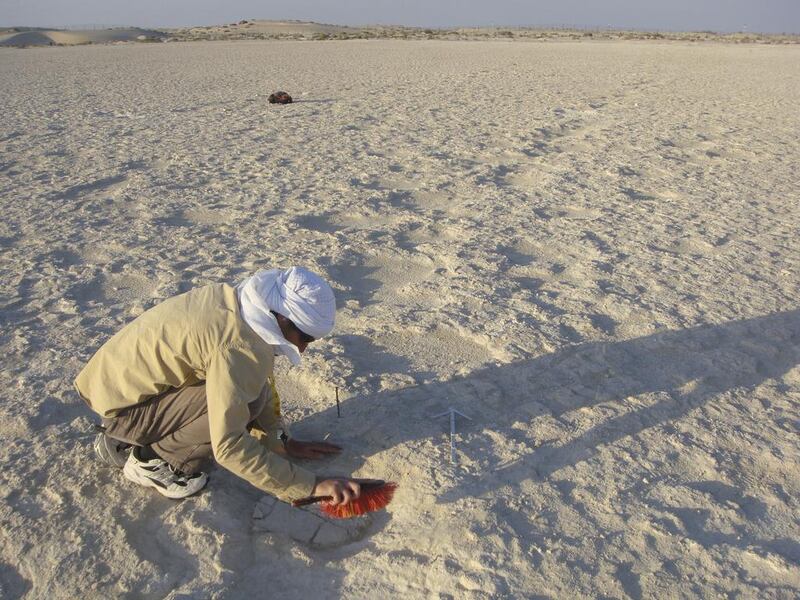ABU DHABI // It is difficult to imagine that the vast desert of the Western Region teemed with elephant, giraffe, greenery and rivers – even if it was 7 million years ago.
Archaeologists and scientists presented fossil records and research at the Baynunah Palaeontology Conference held at Manarat Al Saadiyat on Wednesday, proving the migration of animals from Africa created an ecology that was at one time similar to savannah.
“Like any landscapes, it’s made up of many landscapes,” said Dr Faysal Bibi, co-director of the Baynunah palaeontology project.
“Basically, when you have fresh water, that produces a very different landscape than when you don’t.”
More than 30 years of exploration of the fossil-bearing sediments, known as the Baynunah Formation, have allowed palaeontologists to uncover animal and plant fossils including sabre-toothed tigers, monkeys, hippopotamus and antelope.
After separating from the formation of Pangaea – essentially a super-continent – the Arabian Peninsula moved much closer to the Horn of Africa, where many animals crossed in search of improved living conditions.
Dr Bibi said migrations followed specific geological patterns from Africa to the Arabian Peninsula and carried on to Europe and the Indian subcontinent in some cases.
“As long as the conditions are right, animals will live anywhere that they can, especially big animals,” he said. “As long as they have the kind of water and food they need, then they’ll move there.”
Although animals spent enough time in the region to evolve into variations of species, scientists were able to suggest a migratory path from eastern Africa based on their similarities with the genus endemic to that region.
The Yale-educated Dr Bibi said the animals, whose fossilised remains were found in Baynunah, existed in the region for anytime between 100,000 and a million years.
“We are not only interested in how these animals came to be, but also why they went away, which becomes a very timely topic when you think of what humans are doing to the Earth,” he said.
Dr Bibi, who has been leading expeditions to Abu Dhabi since 2003, said that the extinction of animals was a natural occurrence but that human-induced habitat and species destruction ranked among the most severe.
“Human-induced extinction is on the order of some of the largest extinctions, like meteorites slamming into the Earth or volcanoes erupting causing apocalypse-like scenarios,” he said. “What humans are doing now is going to look equivalent to that.”
Mark J Beech, head of the coastal heritage and palaeontology section for Abu Dhabi Tourism and Culture Authority, said scientists’ findings should be of more interest to the general public.
“This is something that we must consider natural heritage,” Dr Beech said.
“We want to educate people. There is a lot of information available on the internet but many aren’t aware of it.”
He mentioned that websites set up by various government organisations help amateur archaeologists and developers know where dig sites exist in Abu Dhabi.
One of the websites is the Environmental Atlas of Abu Dhabi, which describes the geological history of the region and the Abu Dhabi Geospatial Map.
In his talk, Dr Beech presented the progression of archaeological documentation and geospatial indicators comparing today’s technology of three-dimensional imaging and global positioning satellite coordination to the first maps from the 1800s drawn by British naval officers.
“Everyone has been asking me, where can we see these fossils, why is there not a natural-history museum, and we really want to do something about this,” he said.
The next step would be establishing a museum to help present and raise awareness about the importance of the UAE for archaeologists and palaeontologists.
nalwasmi@thenational.ae






